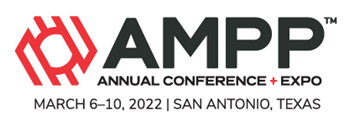Search
Products tagged with '2022 conference papers'
View as
Sort by
Display
per page
Can Micelles Be Used To Expedite And Enhance Laboratory Qualification Testing?
Product Number:
51322-17824-SG
Publication Date:
2022
$20.00
Carbonate And Sulfide Scale Formation In Multiphase Conditions
Product Number:
51322-17894-SG
Publication Date:
2022
$20.00
Case Analysis Of Electromagnetic Interference Of AC Substation On Pipeline
Product Number:
51322-17517-SG
Publication Date:
2022
$20.00
Case History: Lining Water Box Condensers
Product Number:
51322-17937-SG
Publication Date:
2022
$20.00
Case Studies On Vapor Corrosion Inhibitor Monitoring Using Electrical Resistance Probes For Oil And Gas Assets.
Product Number:
51322-17855-SG
Publication Date:
2022
$20.00
Case Study - Sharing An AC Mitigation System
Product Number:
51322-17786-SG
Publication Date:
2022
$20.00
Case Study Based On Coating Failure Analysis Of Cargo Container
Product Number:
51322-18110-SG
Publication Date:
2022
$20.00
Case Study Based On Failure And Application Of Surface Coating (Powder Coating)
Product Number:
51322-18109-SG
Publication Date:
2022
$20.00
Case Study: Foreign Operator DC Interference On An Existing Pipeline Systems
Product Number:
51322-17587-SG
Publication Date:
2022
$20.00
Case Study: HDD CP Retrofit For Existing Critical Service Ethylene Above Ground Storage Tank.
Product Number:
51322-18035-SG
Publication Date:
2022
$20.00
Cathodic Protection -Based Solutions For Corrosion Prevention Of “Green Aluminum” Alloys
Product Number:
51322-17823-SG
Publication Date:
2022
$20.00
Cathodic Protection Monitoring In Water And Wastewater Systems
Product Number:
51322-17655-SG
Publication Date:
2022
$20.00












